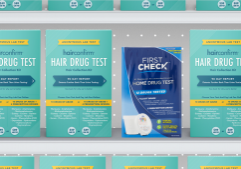Effects and Dangers of Amphetamine Abuse
There are various kinds of drugs that continue to get circulated in the streets, and one of them is amphetamine. This particular substance is a potent central nervous system stimulant that has the ability to affect the brains and nerves. It can be used as treatment for obesity, narcolepsy, and attention deficit hyperactivity disorder (ADHD).
Amphetamine has also been used to several medical conditions such as:
[su_list icon=”icon: dot-circle-o”]
- Nasal congestant
- Cognitive enhancer
- Athletic performance drug
[/su_list]
Benzedrine is medical amphetamine that is used to treat conditions such as a migraine, hiccups, epilepsy, depression, alcoholism, schizophrenia, fatigue, and Parkinson’s disease.
Amphetamine, however, has also been used for recreational purposes, which can become addictive when uncontrolled.
This drug has several medical purposes and only when it is used beyond the recommendation of the doctor does it become a dangerous substance. Many people have been hooked on this type of drug, to the point that different street names have come up to prevent the abuse of amphetamine from being detected by authorities. Some of the street names for amphetamine include:
[su_list icon=”icon: dot-circle-o”]
- Amped or Ampes
- Bennie or Bennies
- Benz or Benzies
- Blue Mollies or Black Mollies
- Boot ups
- Cartwheels
- Dexies or Dexy
- Eye poppers or Eye openers
- Fast lightening or lightening
- Footballs
- Get ups
- Hearts
- Jelly Beans or Super Jellies
- Lid Poppers or Lid openers
- Oranges
- Pick me ups or Wake me ups
- Sparkles
- Speed
- Uppers
- Wake ups
[/su_list]
Any parent should be aware of these terms so that they would be able to determine any potential problem with their children. Parents and the community at large should immediately talk to family members about amphetamine and its dangerous effects.
Amphetamine History and Statistics
Amphetamine was synthetically created in the 1800s by a Romanian chemist named Lazar Edeleanu. It was in the 1920s when it was first used for medical purposes. Amphetamine has been recreationally used in the 1930s by teens and young adults by taking off a strip from Benzedrine inhalers and placing them in a cup of coffee. By chewing and swallowing the strip, an intense stimulant effect is experienced.
By 1950s to 1960s, the drug has become extremely popular, most especially in World War II soldiers as this has become their means of staying awake for long hours. It has also been commonly used by truck drivers who need to make long hauls at night, as well as by university students who needed the extra energy to stay up late at night to study.
By 1962, 200 million amphetamine pills were in circulation in the United States.
By 1965, the dangers of amphetamine use were determined. As a result, amphetamine inhalers were finally given on prescription only and were immediately taken away as an over-the-counter medication.
In 2011 alone, there were approximately 160,000 methamphetamine and amphetamine-related emergency room visits. Nearly 7 percent of college students use amphetamines recreationally. Meanwhile, at least 22 percent of college students using prescription amphetamines take them in higher doses.
Why are amphetamines being abused?
Amphetamines are uppers. Their effects can cause a boost in metabolism, an increase in alertness or wakefulness, and a feeling or urgency. It is for these reasons that most street names would refer to amphetamine as an energy booster.
It is currently categorized under Schedule II of the Controlled Substances Act of the Drug Enforcement Agency. Drugs under this classification are substances that have a high potential for abuse that may lead to severe physical or psychological dependence. Other drugs under this classification are:
[su_list icon=”icon: dot-circle-o”]
- Methadone
- Hydromorphone
- Meperidine
- Oxycodone
- Fentanyl
- Morphine
- Opium
- Codeine
- Hydrocodone
- Methamphetamine
- Methylphenidate
- Amobarbital
- Glutethimide
- Pentobarbital
[/su_list]
As an energy booster, amphetamines have been popular among teens and young adults because the drug allows them to feel positive energy, get things done, and take their minds off of any personal problems. Such euphoric feeling may increase fatigue resistance, reduce reaction time, and can possibly increase muscle strength.
However, if amphetamine is recreationally used – which is usually in large doses – this may lead to drug addiction and serious health effects.
Short-term Effects of Amphetamine
Amphetamine can cause varying effects that depend on the age of the individual, user’s medical state, body composition, and the amount of substance used.
Its short-term effects include:
[su_list icon=”icon: dot-circle-o”]
- Cognitive impairment
- Dizziness
- Dry mouth
- Erectile dysfunction
- Headache
- Heart palpitations
- Hostility
- Hypertension (high blood pressure)
- Increased body temperature
- Increased heart rate
- Irregular heartbeat
- Lack of appetite
- Nausea
- Rapid breathing rate
- Severe anxiety
- Teeth grinding
[/su_list]
Long-term Effects of Amphetamine
Individuals using amphetamine at large doses and for an extended period of time may experience the following:
[su_list icon=”icon: dot-circle-o”]
- Compulsive drug-seeking behavior
- Convulsions
- Cravings for the drug
- Hallucinations
- Loss of coordination
- Obsessive behavior
- Paranoia
- Respiratory problems
- Violent behavior
[/su_list]
Dangers of Amphetamine Abuse
Amphetamine works on the central nervous system in such a way that it alters the normal functioning of the brain. This elicits such uncontrollable, euphoric sensation that could make the different organs of the body work double time, thereby causing rapid respiration and heartbeat.
What makes amphetamine use more dangerous is when it is used in combination with other drugs or with alcohol. Combining amphetamine with a drug that has an opposite effect on the body (such as alcohol) could lead to fatal cardiac arrhythmias. The conflicting effects can easily deteriorate the health condition of the individual, and may possibly cause death.
Effects of Amphetamine on Others
Drug addiction is a continuing battle that has been initiated by the government by making strict policies on the manufacturing, use, and distribution of illicit substances.
However, despite having strict measures against these illicit substances, clandestine laboratories continue to operate. As a result, distribution in the streets – most especially at clubs, parties, and music festivals – is still prevalent. The continued proliferation of the inappropriate use of amphetamines and other illicit substances remains a social problem.
One of the very common amphetamine-containing medical drugs is Adderall. Adderall is primarily used as a treatment for people diagnosed with ADHD. Since the effect of this drug promotes alertness, focus, and concentration, some students make use of this drug as their means to have enough energy to study. This has resulted to naming Adderall as a “study pill”.
When using the drug while studying, the individual may feel that he is able to stay wide awake at night and is able to read longer. However, due to long hours of being awake, by the time the individual goes to school and takes an examination, the individual may no longer have the same energy nor be able to remember what he has studied the night before.
If taken in small doses, Adderall might be able to help. However, taking in frequent large amounts may cause drug dependence, leading the user to no longer experience the same positive effect.
Parents may have noticed that some of their teens exhibit unusual behaviors. It is only right that parents should be aware of the signs and symptoms of substance abuse before it gets too late.
Drug Testing
According to SAMHSA’s guidelines, drug tests should determine five types of substances, namely:
[su_list icon=”icon: dot-circle-o”]
- Amphetamines (meth, speed, crank, ecstasy)
- Cocaine (coke, crack)
- Opiates (heroin, opium, codeine, morphine)
- Phencyclidine (PCP, angel dust)
- THC (cannabinoids, marijuana, hash)
[/su_list]
The importance of drug testing cannot be denied, although it may not be a welcoming thought to some. Having pre-employment drug testing easily determines those who are currently using drugs, and helps to maintain a safe and healthy workplace. This, in turn, leads to an increased morale among employees, increased productivity, and increase in company revenue.
The only way that we can be certain if an individual is using any illicit substances is by letting the individual undergo a drug test. Drug testing may be conducted in various ways using:
[su_list icon=”icon: dot-circle-o”]
- Urine
- Hair
- Sweat
- Blood
- Saliva
[/su_list]
Urine is the most common drug testing method used because of it being inexpensive and less invasive. Generally, amphetamine can be detected in urine about 2-4 days after use, but this could also depend on the amount and frequency of use of the drug. It can also show up as positive in a saliva test about 5-10 minutes after use.
Hair drug testing is an accurate way of testing the presence of amphetamine metabolites, which may be found deeply embedded inside hair shafts. It is impossible for any kind of shampoo to eliminate these drug metabolites, no matter how frequently the hair is washed.
In a study, hair drug testing is believed to be 4-8 times more likely to detect drug users than using urine drug testing.
Hair drug testing may not be as popular as drug testing using urine and blood, but it can also be useful in detecting the presence – not the amount – of a drug in an individual by cutting a hair sample 1.5 inches from the root.
Amphetamine can be detected on an individual’s hair up to 90 days after use. This means that regardless of how short or how long your hair grows, laboratory technicians are only interested in testing the end of the cut hair that is nearest the hair follicle.
There are medically prescribed drugs that may result in a positive drug test. To address this, chiral separation techniques may be used to help determine the source of the drug, whether they are prescription amphetamine, over-the-counter drug products that contain levomethamphetamine, or illicit amphetamine substitutes. Therefore, it is recommended that a full medical history should be taken prior to taking the drug test. Individuals should be able to tell if they are currently taking any prescribed medications, over-the-counter drugs, or any herbal supplements.
Drug testing has become not only as common as a pre-employment requirement, but somehow, suspecting parents would let their teens undergo the same drug testing to ensure that their children are drug-free. When parents would ask their teens to undergo such tests, there is a possibility that their teens may not easily accept the fact that they need to be tested. This may lead to some trust issues – when parents don’t fully explain the need for such drug testing, teens may completely turn away from their parents.
Amphetamine Dependence
Just like any kind of drugs, any inappropriate use may lead to dependence or tolerance. A drug user may feel the need to constantly attain the same effect, which in time may not be possible unless the dose is increased and/or used more frequently. Tolerance to the effects of the drugs can be dangerous as it can cause the collapse of major organs.
Amphetamines can cause weight loss and can become an energy booster that is stronger than the effect of caffeine. Tolerance to amphetamine makes it difficult for users to function without the drug, as they believe that the substance is vital for their existence.
Amphetamine Detoxification
Such dependence, when detected early can save the individual from going through difficult health problems. Withdrawal symptoms are likely to happen when the drug is slowly taken away from the body.
The first few days of treatment may be the most difficult times. It is when a user no longer receives amphetamine and may experience the following unfavorable symptoms:
[su_list icon=”icon: dot-circle-o”]
- Cardiac arrest
- Coma
- Hallucinations
- Psychosis
- Seizures
- Suicidal ideation
[/su_list]
Not all amphetamine users may experience the dangerous effects of amphetamine withdrawal symptoms, as some reported to have been able to go through the treatment smoothly by taking healthy meals and adequate rest.
However, for those who are suffering from the extreme side effects of amphetamine withdrawal, it can take a toll physically and psychologically, which needs to be addressed in a medically supervised environment. It is recommended that the user is treated in a rehabilitation center rather than receiving treatment as an outpatient.
Support
Ordering
About Us
Connect
Confirm BioSciences.
© 2019 Confirm BioSciences, Inc.
All Rights Reserved. See our Terms & Conditions and Private Policy.



